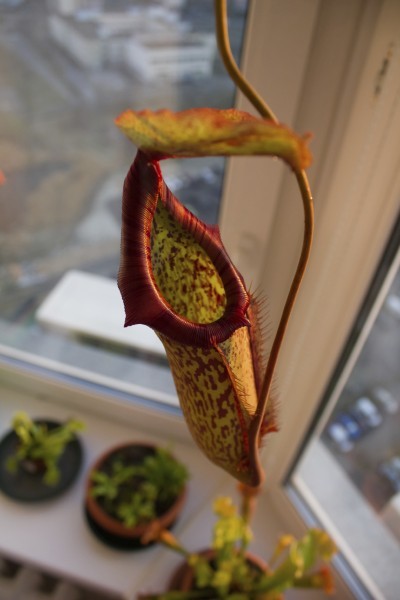






Pitcher plants are fascinating carnivorous plants that are surprisingly adaptable to the indoor environment. However, it’s important to keep in mind that there are many types of pitcher plants with many different needs, and some varieties can be a little on the fussy side. Read on to learn the basics of growing pitcher plant as a houseplant and pitcher plant care indoors.
Light – If possible, refer to the tag that came with your pitcher plant, as sunlight requirements vary depending on the species. Some require full sunlight and may need supplemental lighting year round, while types that originate in the floor of the rainforest may need filtered light. If you aren’t sure of the variety, place your plant in moderate to bright light and avoid, direct, intense sunlight. If the leaves turn yellow or the leaf edges look brown or scorched, move the plant into lower light.
Water – When growing pitcher plant indoors, water as needed to keep the potting soil moist, but not soggy. Allow the pot to drain thoroughly after watering and never let the pot stand in water, as wet soil can cause the plant to rot. Most importantly, pitcher plants are sensitive to the chemicals in tap water and benefit greatly from distilled water or rain water.
Temperature – Indoor pitcher plant care generally requires warm temperatures between 65 and 80 F. (18-27 C.) Read the care tag, however, as some varieties prefer very warm nights while others need cooler nighttime temps between 45 and 65 F. (7-18 C.)
Potting soil – Pitcher plants tolerate a wide range of potting mixtures as long as the mixture is relatively low in nutrients and provides excellent drainage. Many gardeners prefer a combination of half perlite and half dry sphagnum moss. You can also use a mixture of half sharp sand or perlite and half peat moss. Avoid regular commercial mix, which is too rich.
Feeding – Pitcher plants generally require no supplemental fertilizer, although you can mist the plants with a very dilute fertilizer solution during spring and summer (mix no more than ¼ to ½ teaspoon per gallon, using a water-soluble fertilizer formulated for bromeliads or orchids). Your adult pitcher plant will be happy if it can catch a couple of insects every month. If you don’t have bugs flying around your house, provide a freshly killed insect once in a while, (no insecticides!). Use only small bugs that fit easily into the pitchers. Don’t overfeed, and don’t be tempted to give your plants chunks of meat. Remember that carnivorous plants have very low nutrient requirements and too much food or fertilizer can be deadly.
Copyright © www.100flowers.win Botanic Garden All Rights Reserved